The Force Awakens: The Individualistic and Contemporary Heroine
by Payal Doctor
Published December 2017
Abstract
Star Wars Episode VII: The Force Awakens is not the hero’s journey as George Lucas previously conceptualized it. Instead, the story line of The Force Awakens leads me to believe that it creates a new iteration of the hero myth. It follows the contemporary heroine’s journey while conforming to the essential construct of the hero monomyth. First, the contemporary heroine’s journey focuses primarily on the greater good and secondarily on her own personal journey, which is the converse of the traditional hero’s journey. Second, the contemporary heroine’s self is awakened and called to adventure in a different way than the traditional hero. Third, the traditional hero receives guidance on his journey, while the contemporary heroine pushes ahead alone, striving to save her society from despair.
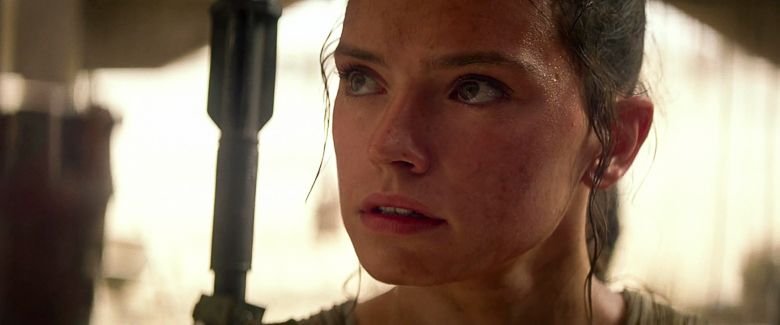
Since its publication in 1949, Joseph Campbell’s The Hero with a Thousand Faces has been the de facto description of the hero’s journey. The Star Wars sagas follow this monomyth with minor deviations from the overall formula. In an interview with Bill Moyers in 1999, George Lucas says, “When I did Star Wars, I consciously set about to recreate myths and the classic mythological motifs and I wanted to use those motifs to deal with issues that existed today” (Moyers 00:02:22-42). The hero arrives at the threshold of adventure, rejects the call to adventure, and finally crosses the threshold into an unfamiliar world where he is helped, or threatened, by forces or guides. He faces a supreme ordeal, gains his reward, and crosses the threshold back into the ordinary world, bringing some elixir with him, which can restore the world (Campbell, Hero 211). Differing characters or episodes can become fused, or a single element can replicate itself and reappear under many different guises. Critically, the hero’s journey is not merely an external physical quest, but depends on the hero’s willingness to look inward and undertake an internal quest into his own psyche. According to Campbell, “the first work of the hero is to retreat from the world scene of secondary effects to those causal zones of the psyche where the difficulties really reside” (Campbell, Hero 12). The hero’s quest is primarily an internal quest about self-discovery and secondarily, an external quest to save his world or his society.
Rey’s journey in The Force Awakens creates a revised heroine archetype that mirrors the diversity and isolation faced by people in modern society. Charting her own path, the contemporary heroine does not and cannot rely on society to help her on her journey, as in the case of Campbell’s hero’s journey, where the path for the hero is laid out by the extant myths and symbols of a society. These stories serve as guidelines on successfully navigating personal transformations and external challenges. Myths and symbols from the past no longer exist as guides for society due to the new challenges that diversity and technology bring. Contemporary hero myths must reflect modern challenges and choices in order to represent contemporary society.
According to producer Kathleen Kennedy, Star Wars is “a story that allows you to participate, there are things that are relevant, things you are identifying with. Certainly for all young kids when the movie came out, they wanted to be Luke Skywalker or they saw themselves as Han Solo” (Abrams 02:33:17-31). Audience participation—the connection with the characters—is absolutely crucial to continuing the Star Wars saga in a way that will not only bring new fans to the franchise, but also embrace those who loved the original films. Following this tradition, J.J. Abrams makes Rey human, just like the protagonists in the earlier Star Wars films, allowing the audience to immediately identify with her character. Rey differs from Anakin and Luke because of her selflessness and willingness to sacrifice her own desires for the greater good from the start of her journey; her external quest takes precedence over all else. I suggest that Rey’s journey is that of a contemporary heroine who differs in significant, albeit subtle, ways from Luke and Anakin. Abrams alters the formula of Campbell’s hero myth to make Rey a character who resembles all genders in the modern audience in terms of her life and identity. Rey struggles to deal with the loss of her family, she is isolated and alone, she does not have a sense of purpose in her life, she has trouble sleeping, she resists looking inward and toward the future, and yet, she still hopes for a better life.
Rey’s gender also makes her relatable to a modern audience. In her blog, Tricia Barr notes “As a cultural critic whose feminism can be ascribed directly to lessons learned from Star Wars and who has struggled with the sexism embedded in the franchise, I knew the re-launch of Star Wars movies had the potential to mark a turning point for the franchise and the fans” (Barr, “5 Reasons”). Other fans and writers, including Patricia Karvelas, participated in a panel discussion on The Guardian website entitled “Star Wars Is a Game-Changer, Awakening the Feminist Force in Little Girls Everywhere.” Barr and Karvelas note that women have always loved Star Wars, but the lack of female characters with their own story arc made it difficult to view the series as encouraging women on their personal journeys (Barr, “5 Reasons” and “How Star Wars”; Karvelas et al.). These writers’ views suggest that The Force Awakens creates a contemporary heroine who is not necessarily feminist, but still reflects the diversity of modern society and a person’s desire to see herself within the characters in popular film.
What truly sets the contemporary heroine apart from Campbell’s hero is that her journey changes the order of the primary and secondary quests in the original hero myth that Luke and Anakin follow. Rey’s primary quest is external; her acceptance of the call to adventure is a result of her selfless and humanistic approach to the world rather than as an internal quest for self-knowledge. Instead of turning inward and away from the world and society, Rey’s primary, external quest takes her out into the world, allowing her to avoid an internal quest. Conversely, Luke Skywalker’s primary journey is an internal quest; it arises from his own desire to learn the ways of the Force and become a Jedi like his father. Similarly, Anakin Skywalker’s primary journey is an internal quest; his choice to improve his circumstances through freedom and training is driven by his deep need to overcome the loss of his mother and his fear of losing Padme.
The contemporary heroine also diverges from Campbell’s hero myth because of her focus on humanity. B.J. Priester’s blog, “The Heroine’s Journey: How Campbell’s Model Doesn’t Fit” states that “[i]n the modern era . . . the focus shifts to humanity . . . and the hero triumphs not by fulfilling the expectations of others, but by changing the rules and winning on his own terms.” There is no predetermined formula that ensures success on a quest for the contemporary heroine, she makes it up as she goes along. Maya Zuckerman’s articles on “The Collective Journey” come closest to this idea; people work within a collective toward a common goal while helping each other and themselves (Zuckerman, “Collective, Part 1” and “Collective, Part 2”). Rey is part of a collective in the sense that there is a common cause or higher purpose among the characters in The Force Awakens—finding Luke Skywalker (Zuckerman, “Collective, Part 1”). However, only a couple of characters are pursuing this goal at any given time.
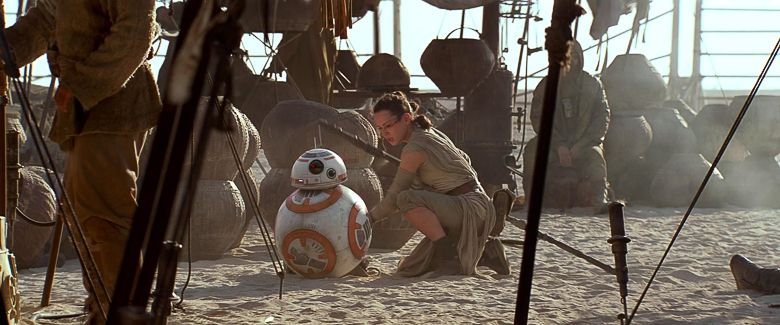
When she is able to help others, Rey jumps at the chance, quickly responding to BB-8’s cries for help (Abrams 00:14:48-54). The contemporary heroine strives to improve society when the opportunity arises. Instead of waiting for her “community to cast off its slough of pride, fear, rationalized avarice, and sanctified misunderstanding,” the modern heroine, unaware at first, reaches out to save her society from ignorance of the immanent divine, the Force in the Star Wars universe, within each person (Campbell, Hero 337). Rey, as the contemporary heroine, then, guides and saves society, rather than society guiding the hero, which was the norm in the original hero myth. Each person within contemporary society faces this journey since it is through individuals that society is transformed.
The call to adventure is often realized as “the awakening of the self” (Campbell, Hero 42). Campbell’s heroes, like Luke and Anakin, know they are different and have some awareness of the forces within that drive them. The awakening of the self arises from within initially, but then it is fully triggered by the arrival of a herald who marks the beginning of the journey. Alternatively, the contemporary heroine has no sense about being different or that life can be more than what it is. Her awareness is of the suffering of her society. Rey’s self is not awakened until later in the film, even though her journey still begins with the arrival of BB-8. She is ignorant of the forces propelling her from within.
Luke’s call to adventure is his meeting with Obi-Wan Kenobi and seeing the message from Princess Leia. His character is already established as unsatisfied with farm life and that he wants to do much more. By the time he accepts the call and joins Obi Wan Kenobi on his mission, there is nothing left for him on Tatooine; becoming a Jedi like his father is the only option (Lucas, Star Wars Episode IV). Luke crosses the threshold of adventure, gaining awareness and gradual understanding of the mysterious and ineffable dimension that is the Force through Obi Wan’s and Yoda’s tutelage. Notably, his quest is primarily about his personal journey to become a Jedi, and secondarily about the defeat of the Empire.
Anakin’s call to adventure is when he meets Qui Gon Jinn. Initially, he is selfless in helping Qui Gon and Padme, but his unwillingness to let go of his mother while moving toward the threshold of adventure indicates that he is not a willing hero (Lucas, Star Wars Episode I). His attachment to those he loves makes it impossible to “retreat from the world scene of secondary effects to those causal zones of the psyche where the difficulties really reside” (Campbell, Hero 12). Anakin’s self-awakening allows him to experience the power of the Force, but his ego and fear ultimately prevent him from using his power for good. As a hero, his primary quest is about learning to use his power for unselfish reasons and his secondary quest is about fulfilling his destiny and bringing peace to the galaxy by destroying the Sith. Anakin’s inability to overcome his ego and let go of his fear leads him away from the hero’s path—and his primary and secondary quests—until The Return of the Jedi.
Rey’s heroine journey begins when she rescues BB-8 from Teeto who wants to sell him for scrap. Her willingness to allow BB-8 to stay with her, protect him from the First Order, and forgo a large number of rations to sell him to Unkar Plutt indicates that she instinctively knows that he represents something worth protecting (Abrams 00:18:38-00:19:09; Kay, “The Force”). At this point in the film, Rey is unaware of the Force, but this scene implies that she respects life and does not want to allow another creature to suffer, in addition to raising the possibility that there is some deep undiscovered knowledge in her psyche which moves her to refuse the sale. Once Finn discloses that BB-8 is carrying a map that will help the Resistance find Luke Skywalker, Rey embraces her primary quest and leaves Jakku behind—with the intent of returning, once BB-8 is safe with the Resistance. At several points in the film, Rey seems ready to go back to Jakku, but glimpses of her resolve to finish her quest are witnessed by her actions on Takodana, as when she chides Finn for abandoning BB-8. Selflessness propels her forward once she understands the potential impact of her actions on society, despite the fact that it means leaving behind any possibility of a reunion with her family.
It is here that another key difference between the traditional hero journey and the contemporary heroine journey is revealed. In the traditional sense, Rey is not a hero; her call to adventure is significantly different than that of Luke or Anakin. Neither the awakening of the self nor the first work of the hero fit into Rey’s journey; she has not retreated from the world scene and no internal quest is apparent (Campbell, Hero 12). On the contrary, she becomes more entangled in happenings beyond Jakku during her quest to return BB-8 to the Resistance as she is caught up in the fight against the First Order. It is not until part way through her primary quest that she experiences the Force, the mysterious and ineffable power underlying her conscious self. This experience unfolds her secondary quest to understand herself and her abilities, and to unify her self. Rey’s contemporary heroine journey begins with an external quest; her internal quest is not clear until much later in the film.
Luke and Anakin answer the call to adventure for primarily selfish reasons, while Rey begins her adventure selflessly. Self-interest causes Anakin to side with Emperor Palpatine in order to save those he loves from death, and it pushes Luke to follow in his father’s footsteps and become a Jedi. Arguably, Anakin is originally selfless, similar to Rey, but his pursuit of self-knowledge quickly turns into a need to gain power for selfish reasons. Although Luke’s character changes over the course of the trilogy, it is important to note that his hero journey commences in a fundamentally different way than Rey’s. Rey thinks little of herself and her own desires; she is willing to help others with less power without hesitation. Protecting BB-8 and helping Finn escape the Rathtar without taking credit for her role in either event demonstrate her selflessness. Her focus on others changes the order of the traditional hero’s primary and secondary quests. As a contemporary heroine, she does not answer the call to adventure in pursuit of self-knowledge, as do Luke and Anakin, but because she wants to make a difference in the galaxy by delivering BB-8 and the map to the legendary Luke Skywalker to the Resistance.
The traditional hero’s journey often features supernatural aid or magical helpers that exemplify the unified soul or guide the hero on his journey; these helpers also protect the hero as long as the hero trusts in this protecting power (Campbell, Hero 57-60). To the hero, these helpers offer much more than mere tutelage; their protection enables the hero to accomplish his quests and pass all the tests without fear of death or failure.
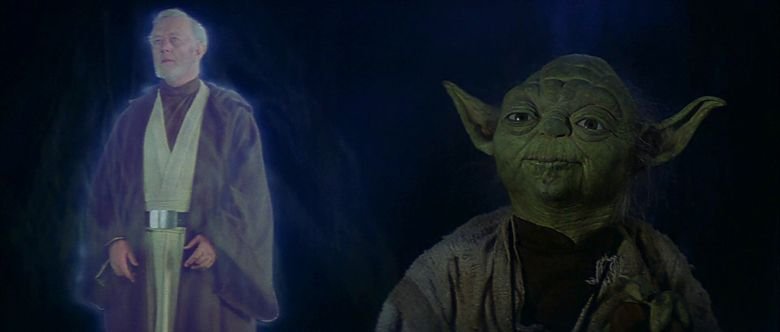
Luke’s teachers, Obi Wan Kenobi and Yoda, perform the standard roles of the magical helpers, and his personal growth takes place precisely because he has these helpers throughout his journey. As he moves through the original trilogy, Luke, “[h]aving responded to his own call, and continuing to follow courageously as the consequences unfold, finds all the forces of the unconscious at his side,” first going to Alderaan, then to the Dagobah system, and finally to confront Darth Vader (Campbell, Hero 57-60). The “forces of the unconscious” are the Force in the Star Wars universe; between the Force and the guidance Luke receives throughout his journey, he finally reaches his own decision about who he is and what he believes about Darth Vader, completing his primary quest and becoming a Jedi, like his father.
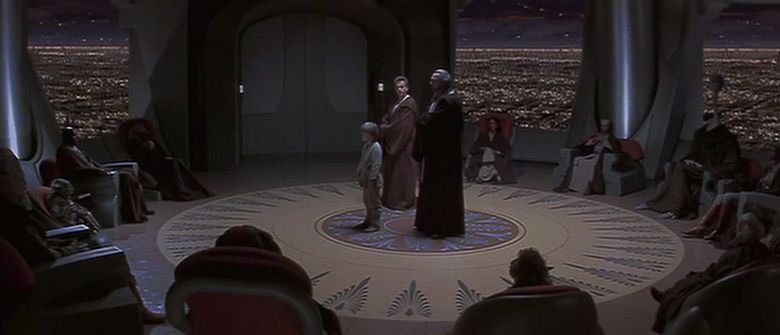
Anakin Skywalker’s journey is not as straightforward as Luke’s. He has friends and support structures to guide him; however, his son is the final teacher he needs before he can fulfill his primary quest. The one guide successful in reaching Anakin is Senator Palpatine, the “mercurial figure” who lures the innocent soul into realms of trial (Campbell, Hero 60). Anakin chooses the dark path because he is filled with fear and confusion and does not trust his other guides. Anakin’s journey lacks acceptance of courageously moving forward regardless of the consequences; his refusal to accept the natural order of life and death, change, or the consequences of his choices, means that Anakin rejects the supernatural aid that manifests as guides throughout his primary quest, leaving him on his own until The Return of the Jedi. His journey is more similar to Rey’s than to Luke’s, but Anakin’s journey is still primarily selfish because he chooses to learn about himself and his power for his own gain.
The contemporary heroine is not far removed from Campbell’s construct of the hero myth, nor from the other heroes in the Star Wars universe, but she can go it alone, without a teacher, which is new to the hero mythology. Both Rey’s scavenger existence and her insistence that Finn stop taking her hand as they flee the Stormtroopers on Jakku show she is an individual who can take care of herself. The contemporary heroine must be a self-sufficient individual because the path to transform oneself and society, once laid out for heroes by the myths and symbolic traditions of society, is now lost. Since Luke’s retreat into solitude following the slaughter of his revived Jedi Order by the Knights of Ren, there is a vacuum in the Force, in which only the dark side thrives under Supreme Leader Snoke. Beings in the Star Wars universe lose their connection to the Force, the mysterious and ineffable dimension of their existence, when the Jedi Order is wiped out and the natural balance is destroyed. Rey’s comment earlier in the film that she thought the Jedi and Luke Skywalker were all just a myth illustrates that this society’s timeless universe of symbols has collapsed, and that society needs a heroine to bring back the universal mythological symbols, such as the Jedi Order, that transform and guide society. Her society needs a savior to help them reconnect with the unconscious truth that is lost with the destruction of the Jedi. Forging ahead, her primary quest shifts from BB-8 to bringing back the elixir—Luke Skywalker—to restore hope to society and balance to the Force.
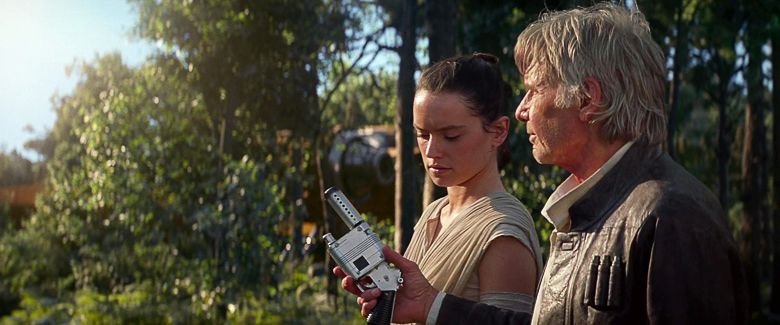
The individualistic journey of the heroine in The Force Awakens changes a fundamental paradigm in Star Wars and creates a contemporary heroine myth. While Rey’s primary quest is accomplished without supernatural aid or protection, she does receive some help in her secondary quest. BB-8 provides the location of the Resistance base, but this does not constitute assistance or protection against the forces with which she must contend to get there. Rey makes her way through The Force Awakens with the help of some friends. Han Solo and Maz Kanata, as interim guides, nudge Rey towards truths she has denied until now and reveal a path forward, the existence of which she has been previously unaware. Hearing that no one is coming back for her on Jakku and learning that Luke and the Force are real enable Rey to finally acknowledge her internal quest. While a father figure might provide some protection, Han simply provides Rey with a pistol, which could be interpreted as an amulet or talisman for protection, even though it does not actually help her very much (Barr et al.; Priester, “Rey’s Heroic Journey”). Ultimately, she protects herself on her quest, escaping from Kylo Ren and then defeating him, her survival and success rarely depend on anyone else. Han’s assistance with her primary quest—returning BB-8 to the Resistance—is also insubstantial, since the Resistance comes directly to her once their spies alert them to BB-8’s location on Takodana. All that Rey knows, she has learned on her own, from fighting and technical knowledge, to altruistic behavior. Fortunately, her primary quest does not require tutelage, but only minimal assistance to accomplish the tests. Her isolation led to her becoming a resourceful individual with the capability to restore the elixir that would alleviate the hopelessness in her world.
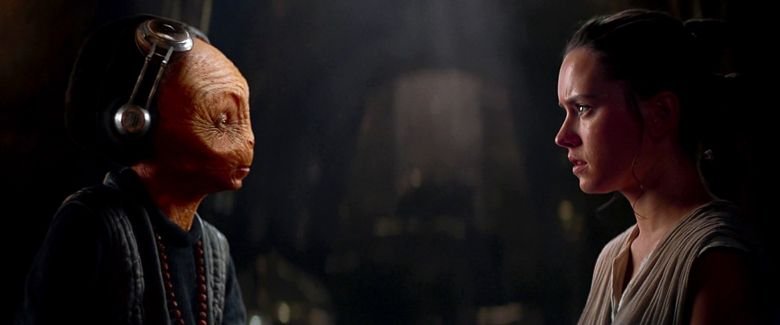
On the other hand, Rey’s secondary quest, the struggle to unify her soul, does require a teacher. Maz Kanata is the best Rey has in the way of a magical helper. Counseling that the belonging she seeks is not behind her, but ahead, Maz exposes the fact that Rey is afraid to move towards the future and that she needs to begin a quest for personal growth and self-discovery (Abrams 01:07:05-38). Her brief interaction with Maz triggers the awakening of Rey’s unconscious, marking the beginning of her personal, but secondary, quest to discover and understand herself.
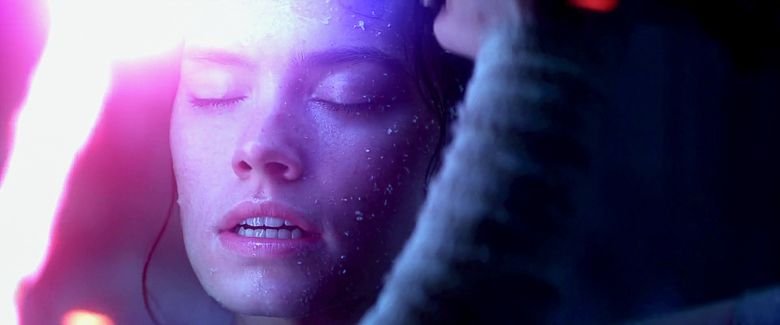
After receiving Maz’s advice, Rey experiences a connection to the Force and fully embraces it when she resists and reverses Kylo Ren’s mind probe during capture. What was once unconscious and unknown slowly becomes conscious, as Rey explores the Force, the mysterious and ineffable divine within her. In the final battle with Kylo Ren, Rey uses the power of the Force to retrieve Luke’s light saber, although she seems genuinely surprised when it actually works. When she is hanging over a precipice, and Kylo Ren tells her that she needs a teacher and that he can show her the ways of the Force, she muses, “The Force . . . ” and closes her eyes for a moment (Abrams 01:56:17-40). At this moment, perhaps Rey is recalling Maz’s brief lesson about the Force, and by knowing it and trusting it, the Force manifests in her consciousness supporting her on her quest.
According to Barr and Priester, Han and Maz do fulfill the Campbellian guide archetypes (Barr et al.; Priester, “Rey’s Heroic Journey”). While these characters do fit Campbell’s description of the magical helper, it is notable that she receives minimal tutelage in The Force Awakens. In comparison to Luke and Anakin, this amounts to very little in the way of supernatural aid. Supernatural guidance in Campbell’s hero myth has a much larger role in the hero’s journey than we see in Rey’s journey thus far. For the most part, Rey discovers her connection to the Force, apart from Maz’s advice, on her own. What is clear, is that when Rey finds Luke, her primary and secondary quests have converged. Luke Skywalker’s return from exile serves not only the good of society, but also Rey’s personal quest for self-knowledge and unification of her soul. Her secondary quest is a natural byproduct of her primary quest, just as it is for Luke and Anakin, but Rey’s primary quest is about saving society, not about helping herself.
While the Star Wars sagas and the hero journeys of Luke Skywalker and Anakin Skywalker are models of Campbell’s hero journey, the release of Star Wars VII: The Force Awakens began a debate about whether J.J. Abrams’s film adheres to the same monomyth or significantly alters the archetypal hero’s journey. B.J. Priester and Tricia Barr published several blog posts on the matter, ultimately arguing that while Campbell’s monomyth is outdated for modern society, Rey’s journey in The Force Awakens does follow Campbell’s and Christopher Vogler’s hero formulas (Barr, “5 Reasons” and “How Star Wars”; Barr et al.; Priester “Heroine’s Journey” and “Rey’s Heroic Journey”; Vogler). Priester’s analysis of Rey’s journey does not examine the differences between Luke, Anakin, and Rey with regard to their internal and external quests and how these match up with the primary work of a hero. In this light, Rey’s journey is distinct and cannot be said to fall under Campbell’s or Vogler’s models.
Rey is the contemporary heroine, exemplifying a journey that differs from Campbell’s model in subtle, but significant ways. The shift towards female and other gendered protagonists in films, TV shows, and other media reveal that Campbell’s model is male-centric and not truly universal. Priester’s blog evaluates three areas that preclude applying Campbell’s model to the heroine’s journey, most importantly that the monomyth is formulated from looking backward to societies much different from those existent in the 21st century (Priester, “Heroine’s Journey”). Contemporary theories of the hero/heroine journey mirror the personal journeys of the audience members, regardless of gender and ability. Such journeys lead individuals to unify, transform, or understand aspects of themselves, similar to the ways in which the characters seen on the screen achieve personal growth. For instance, in 1990 Maureen Murdock wrote The Heroine’s Journey: Woman’s Quest for Wholeness offering a feminist version of the hero’s journey, and Maya Zuckerman creates a journey that mirrors the all genders in her post, “The Gendered Journey.” New theories arise to explain new experiences; Murdock’s and Zuckerman’s alternative heroine and gendered journeys offer modern individuals ways to explain their individual quests that no longer conform to traditional roles of gender-specific archetypes. Rey’s journey in The Force Awakens resembles these contemporary heroine journeys because it is relatable for a diverse audience and it creates a new iteration of the hero’s journey.
The need for a new iteration of the heroine’s journey arises from societal changes in the real world. Various theories of the hero’s journey from the 1980s and later demonstrate that contemporary society is not the same as those societies in which Campbell’s monomyth held true. Campbell acknowledges that the monomyth cannot remain unchanged. Towards the end of The Hero with a Thousand Faces, Campbell describes the modern hero as the one who understands that mythological symbols, which were once universal, are now specific to local life and tradition (335). Modern society has no unifying beliefs or traditions to hold it together, as in the past. Campbell’s, Vogler’s, Murdock’s, and Zuckerman’s theories are all in part applicable to Rey’s journey; however, no one theory completely captures Rey’s journey.
On the surface, Rey must save her society from despair by working to bring awareness of the Force back into people’s consciousness. The essential experience of the Force as the mysterious and ineffable dimension within individuals in Rey’s society has diminished or remains unknown to their conscious selves, causing them despair. The contemporary heroine reflects this diminished awareness of self. On a deeper level, Rey is not “awakened” in any sense and is exiled from the immanent divine principle within herself, and yet she is not exiled from this immanent divine principle; it exists deep within her subconscious (Campbell, Myths 2). This principle is what drives people towards self-discovery and transformation. Rey’s need to overcome her ignorance of or aversion to this aspect of her self is the basis for her internal quest. Her conscious and unconscious are disconnected, leaving her unable to harness her true potential. Rey’s journey in The Force Awakens differs from Luke’s and Anakin’s hero quests because of who she is and the choices she makes. Her character reflects the nature of modern individuals struggling to figure who they are, continuing to survive day-to-day, doing the best they can and helping make society a better place.
The modern heroine realizes that humans understand everything about their world except themselves.
[F]or the democratic ideal of the self-determining individual, the invention of the power-driven machine, and the development of the scientific method of research have so transformed human life that the long-inherited, timeless universe of symbols has collapsed. (Campbell, Hero 333)
Today’s world differs from the world in which the original Star Wars trilogy was created. A June 2015 press release from the United States Census Bureau for Generation X, those born between 1965 and 1980, and for the Millennial generation, those born after 1980, concludes that “millennials are more diverse than the generations that preceded them, with 44.2 percent being part of a minority race or ethnic group (that is, a group other than non-Hispanic, single-race white)” (“Millennials”). According to the Pew Research Center report on “The Whys and Hows of Generations Research,” attitudes towards legalization of marijuana, same-sex marriage, and religion, and political and ideological views have shifted significantly between these generations (“Whys”). The advent of the internet, smartphones, virtual reality, and other advancements fundamentally change the way people interact with one another and consume media. Clearly, society and the ways in which modern society works, learns, and lives differ between now and 1977-1983. Technology and immigration have made the world smaller and more connected. Shared experiences and stories still exist, but now it is more difficult to find common ground as each person buries herself in her own world of media, news, and games.
In a roundup of views on the effects of technology on human communication skills, Sarah DiGuilio quotes Nicholas Carr, author of The Glass Cage: How Computers Are Changing Us on how the modes of thinking have changed when we are no longer alone with our thoughts and constantly socializing:
[I]t becomes much harder to practice the attentive types of thinking—contemplative thought, reflective thought, introspective thought. That means it’s very hard to translate information into rich, highly connected memories that ultimately make us smart and intelligent. (DiGiulio)
With less time to practice attentive types of thinking, individuals do not reflect or introspect as much as before the existence handheld computers which distract people from their thoughts. Contemporary society is exactly this: technology has transformed human life so that people seldom take the time to contemplate, reflect, and understand who they are; people do not understand one another or themselves. Commenting on an earlier form of this phenomenon, Campbell asserts that, “Man is that alien presence with whom the forces of egoism must come to terms” (Hero 337). The challenges presented by technology requires a choice to unplug. Individuals who take time to introspect may become aware of the needs of their societies and, hopefully, choose to act and improve their communities, similar to Rey. In the film, Rey introspects briefly while she is in Unkar Plutt’s shop, indicating that Rey is vaguely aware of the dismal state of society and the need for change (Abrams 00:13:06-12).
At the end of The Force Awakens, it is unclear if Luke will actually come back to society, teach Rey, restore the Jedi Order, and bring peace and justice back to the galaxy. Yet Rey’s turning inward now becomes her primary quest. It remains to be seen in Star Wars VIII: The Last Jedi exactly how her journey continues. The main differences between the hero journeys of Luke Skywalker, Anakin Skywalker, and Rey are the focus of their primary and secondary quests, the mode of self-awakening and call to adventure, and the guidance they receive on their journeys. Across all three journeys, the hero monomyth remains intact, but the notable differences between the hero journeys of Luke and Anakin compared to Rey’s boil down to the heroes’ willingness to look inward and journey into his own psyche. For the contemporary heroine, this inner call is virtually nonexistent, and then only comes about gradually. Rey’s experiences with Luke’s light saber, Maz, and Kylo Ren awaken her to the Force and allow her to begin the hero’s work as a secondary quest. Rey’s character and her choices mirror people in modern society whose lives are complex and who do not want to look inwards and take the time to find out who they are, yet they act for the good of society in the hope of making a difference, perhaps finding themselves in the process. On Jakku, Rey passively waits for her parents return, but after her experiences on Takodana, she takes an active role in her personal discovery. She is pushed out of her ordinary world into an adventure that enables her to make a difference in her society; her work as the contemporary heroine is accomplished.
The features of Rey’s journey differ according to the theories laid out by Vogler, Murdock, and others, yet, the overarching aims of a hero’s journey are twofold: 1) personal growth and self-discovery, and 2) saving society. The latter aim is typically a byproduct of traditional hero’s quest for self-discovery. Crossing a threshold, overcoming tests, attaining a reward, and crossing back over the threshold require heroes to unify their souls and bring about change within society. The order in which the hero undertakes these two quests reveals his or her character and whether he or she is a traditional Campbellian hero or a contemporary one representing modern society. Rey redefines existing hero theories and with the release of The Last Jedi, audiences will be able to see the result of her trajectory.
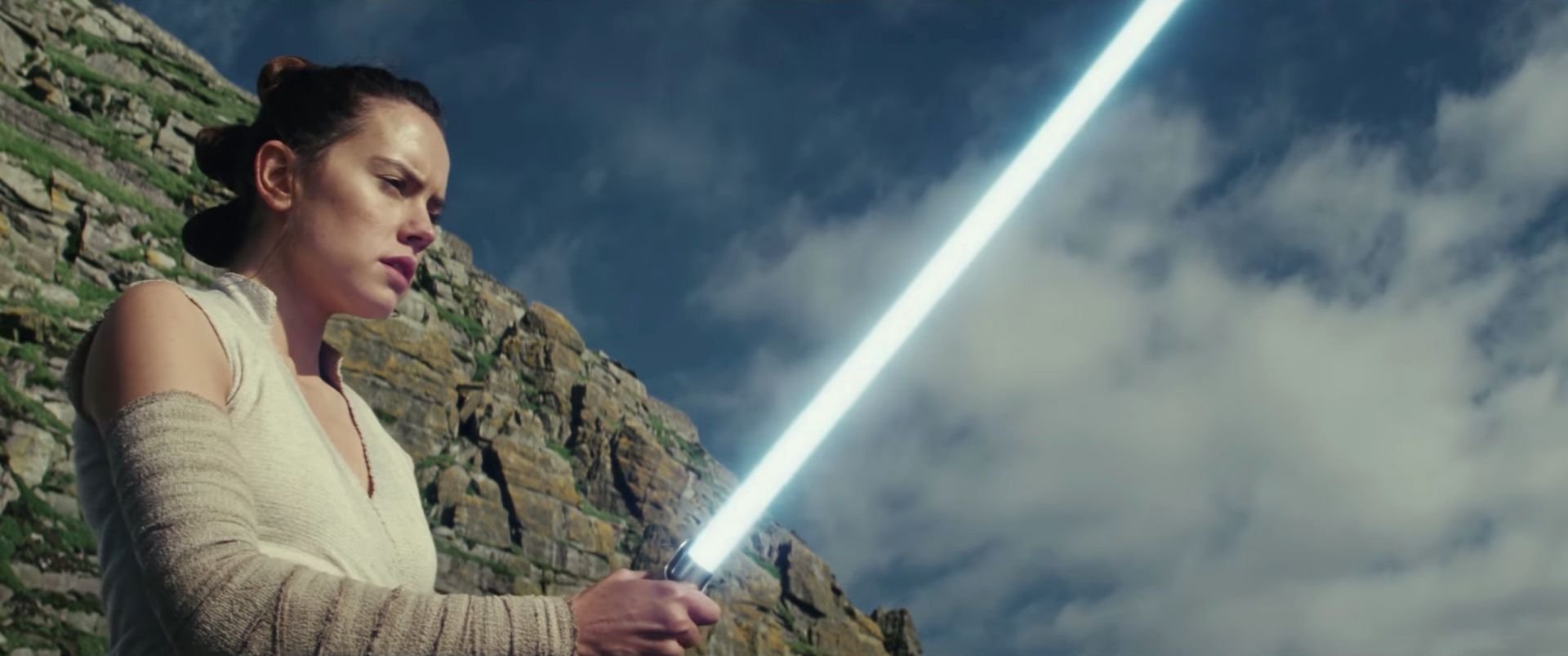
Works Cited
Abrams, J. J. Star Wars Episode VII: The Force Awakens (Plus Bonus Features). Walt Disney Studios Motion Pictures, 2016.
Barr, Tricia. “5 Reasons Star Wars: The Force Awakens Is Not Actually That Feminist.” Popsugar.com, 7 Jan. 2016, https://www.popsugar.com/entertainment/How-Feminist-Star-Wars-Force-Awakens-39672721. Accessed 29 Sept. 2017.
---. “How Star Wars Made Me a Feminist—Even When the Franchise Was Not.” Popsugar.com, 6 Jan. 2016, https://www.popsugar.com/entertainment/Star-Wars-From-Feminist-Perspective-39361046. Accessed 29 Sept. 2017.
Barr, Tricia, et al. “Rey and the Hero's Journey in The Force Awakens.” Podcast. Hyperspace Theories Special Edition, 7 Feb. 2016, http://hyperspacetheories.libsyn.com/reys-heros-journey-in-the-force-awakens. Accessed 30 Sept. 2017.
Campbell, Joseph. The Hero with a Thousand Faces. 3rd ed., New World Library, 2008.
---. Myths of Light: Eastern Metaphors of the Eternal. Edited by David Kudler, New World Library, 2003.
DiGiulio, Sarah. “Your Smartphone Is Changing the Human Race in Surprising Ways.” NBC News, 12 Apr. 2017, https://www.nbcnews.com/storyline/the-big-questions/your-smartphone-may-actually-be-changing-human-race-n743866. Accessed 3 Nov. 2017.
Karvelas, Patricia, et al. “Star Wars Is a Game-Changer, Awakening the Feminist Force in Little Girls Everywhere.” The Guardian, 29 Dec. 2015, https://www.theguardian.com/commentisfree/2015/dec/30/star-wars-is-a-game-changer-awakening-the-feminist-force-in-little-girls-everywhere. Accessed 3 Nov. 2017.
Kay. “Using the Force in The Force Awakens.” Fangirl Blog. 23 Oct. 2017, http://fangirlblog.com/2017/10/using-the-force-in-the-force-awakens/. Accessed 11 Nov. 2017.
Lucas, George. Star Wars Episode I: The Phantom Menace. Twentieth Century Fox Film Corporation, 1999.
---. Star Wars Episode IV: A New Hope. Twentieth Century Fox Film Corporation, 1977.
Marquand, Richard. Star Wars Episode VI: The Return of the Jedi. Twentieth Century Fox Film Corporation, 1983.
“Millennials Outnumber Baby Boomers and Are Far More Diverse, Census Bureau Reports.” Press Release CB15-113. United States Census Bureau, 25 June 2015, https://www.census.gov/newsroom/press-releases/2015/cb15-113.html. Accessed 3 Nov. 2017.
Moyers, Bill. The Mythology of Star Wars with George Lucas and Bill Moyers. Public Affairs Television, 1999. Vimeo, 18 June 1999, https://vimeo.com/groups/183185/videos/38026023. Accessed 3 Nov. 2017.
Murdock, Maureen. “The Heroine’s Journey.” Maureen Murdock, 2016, http://www.maureenmurdock.com/articles/articles-the-heroines-journey/. Accessed 29 Sept. 2017.
---. The Heroine's Journey: Woman's Quest for Wholeness. Shambhala. 1990.
Priester, B. J. “The Heroine’s Journey: How Campbell’s Model Doesn’t Fit.” Fangirl Blog, 20 Apr. 2012, http://fangirlblog.com/2012/04/the-heroines-journey-how-campbells-model-doesnt-fit/. Accessed 29 Sept. 2017.
---. “Rey’s Heroic Journey in The Force Awakens.” Fangirl Blog, 8 Feb. 2016, http://fangirlblog.com/2016/02/reys-heroic-journey-in-the-force-awakens/. Accessed 29 Sept. 2017.
Vogler, Christopher. The Writer's Journey: Mythic Structures for Writers, Michael Wiese, 2007.
“The Whys and Hows of Generations Research.” Pew Research Center, 3 Sept. 2015, http://www.people-press.org/2015/09/03/the-whys-and-hows-of-generations-research/. Accessed 3 Nov. 2017.
Zuckerman, Maya. “The Collective Journey, Part 1.” HuffPost. 27 Jan. 2016, updated 27 Jan. 2017, http://www.huffingtonpost.com/entry/the-collective-journey-pa_b_9073346.html. Accessed 29 Sept. 2017.
---. “The Collective Journey, Part 2.” HuffPost. 29 Jan. 2016, updated 28 Jan. 2017, http://www.huffingtonpost.com/entry/the-collective-journey-pa_1_b_9095040.html. Accessed 29 Sept. 2017.
---. “The Gendered Journey.” HuffPost. 9 Oct. 2015, updated 9 Oct. 2016, https://www.huffingtonpost.com/maya-zuckerman/the-gendered-journey_b_8270528.html. Accessed 29 Sept. 2017.

